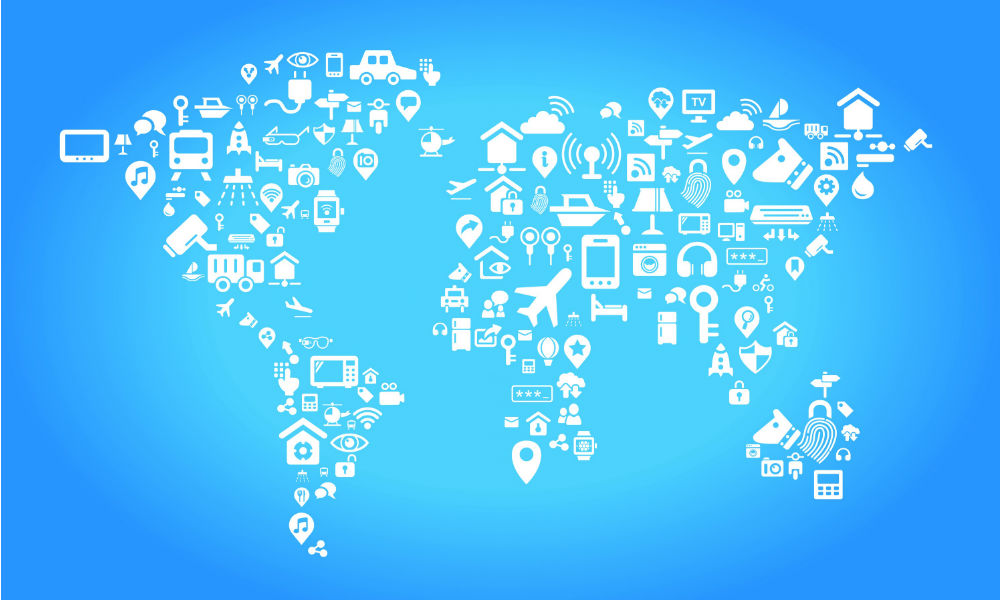
IoT (the Internet of Things) demonstrates how deeply the modern digital technologies can merge with people’s day-to-day routine. The progress of this industry is being fueled by the contemporary trend of digitizing everything.
The Internet of Things has significantly expanded its reach over the past few years. Given its ubiquity, it makes sense to consider the possible abuse of human rights, privacy, and existing legislation that might stem from unrestrained pervasion of these technologies into different areas of our life.
The quickly evolving IoT, which has gained some notoriety for using poor security practices, may pose serious risks to electronic systems and humans alike. Various types of connected devices can be harnessed as springboards for deploying large-scale cyber-attacks. These campaigns won’t be thwarted by state borders, international regulations and time zones unless there are effective protection mechanisms in place.
Smart devices are certainly a godsend in terms of convenience and a great way to keep up with the trends, but the security component of this ecosystem shouldn’t be underestimated.
Is IoT more suitable for B2C or B2B?
Both areas can benefit from the Internet of Things. However, the security criteria for connected devices in B2B are more stringent than the requirements for smart things used in B2C. Here’s an illustration of the difference.
John decides to set up a web camera in his backyard so that he can check if all is well there using his smartphone. A corporation installs sensors and surveillance cameras in its numerous offices across the country. The Internet of Things is in play in both cases, but the infrastructure and equipment used aren’t comparable.
A regular user is very unlikely to ever consider securing the web traffic bouncing between his smartphone and the web camera. Modifying the default access credentials is perhaps the maximum precaution in this scenario. Contrary to that, a corporation will employ top VPN services to safeguard the network communication between its remote offices and prevent the data from being intercepted or tampered with.
How safe is it to use IoT at home?
One of the takeaways from the numerous reports about smart household devices being hacked and used in DDoS campaigns is that neither the manufacturers nor the consumers care much about the security of these things. Convenience-first mindset is what the end user is primarily driven by, often ignoring security concerns altogether. The manufacturers, in their turn, don’t want to make their products less user-friendly, which might cause the sales to plummet.
It’s not until recently that major standardization institutions and technological consortiums have come up with security recommendations applicable to IoT. A few examples include the NIST Cybersecurity for IoT Program and GSMA (News - Alert) IoT Security Guidelines. Hopefully, the rising trend of creating a secure Internet of Things will bring tangible results in the near future.
Are people ready for ubiquitous smart things?
End users who prioritize convenience, on the one hand, and manufacturers facing a tradeoff between security and user-friendliness, on the other hand, think they are prepared for total adoption of IoT. However, from a long-term perspective, the whole convenience will only matter as long as the network connecting all the smart devices is a secure and trusted ecosystem.
How ready are we for smart cities?
It’s only in a theoretic world without cybercriminals that critical infrastructure components can be connected to the Internet in an absolutely secure way. Unfortunately, there is no way to make all malefactors vanish. In order to mitigate the risks they pose, it’s necessary to set up separate network segments leveraging reliable authentication and other access monitoring instruments.
What are the hurdles to more rapid implementation of IoT?
The fundamental issue is that there is no uniform strategy to harden the security of connected things. Such a strategy should provide regulations and guidelines that all the involved parties would have to comply with.
What should vendors do to keep their IoT devices and us on the safe side?
- The user manuals should include walkthroughs to configure the devices’ security controls.
- Unused features and services should be automatically turned off to limit the exploitation potential.
- Default passwords should be subject to mandatory changing. The vendors need to create policies that enforce the use of strong, hard-to-guess passwords.
- Devices and firmware code should be thoroughly checked for security flaws before mass deployment.
- Firmware updates with security patches should be rolled out on a regular basis.
Not only do consumers benefit from using more secure devices, but also the manufacturers can enhance customer loyalty by adopting the measures above. In other words, proper security can become a competitive advantage. Of course, these guidelines aren’t a cure-all, but they will definitely enhance the protection of smart things and the related real-world entities against cyber threats.
